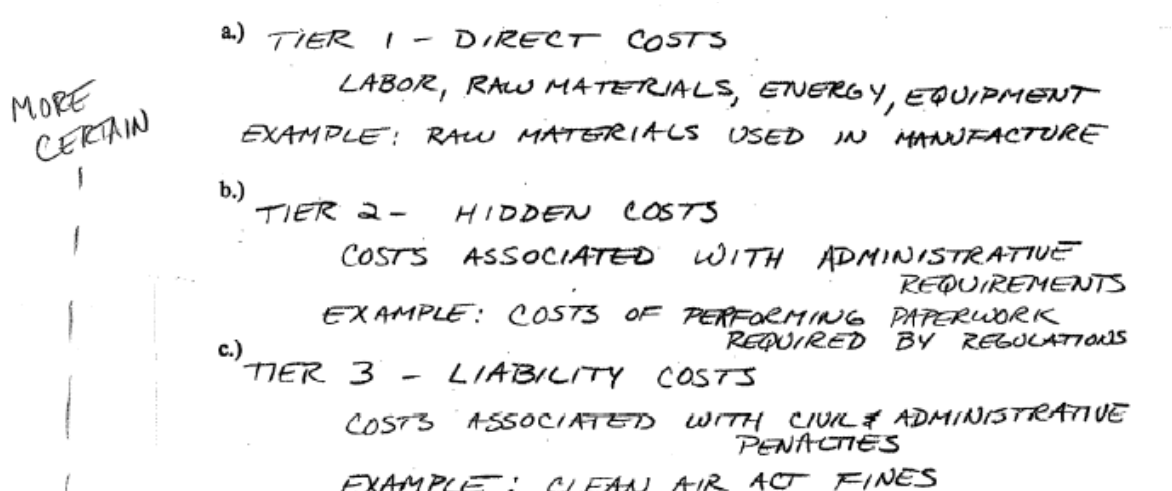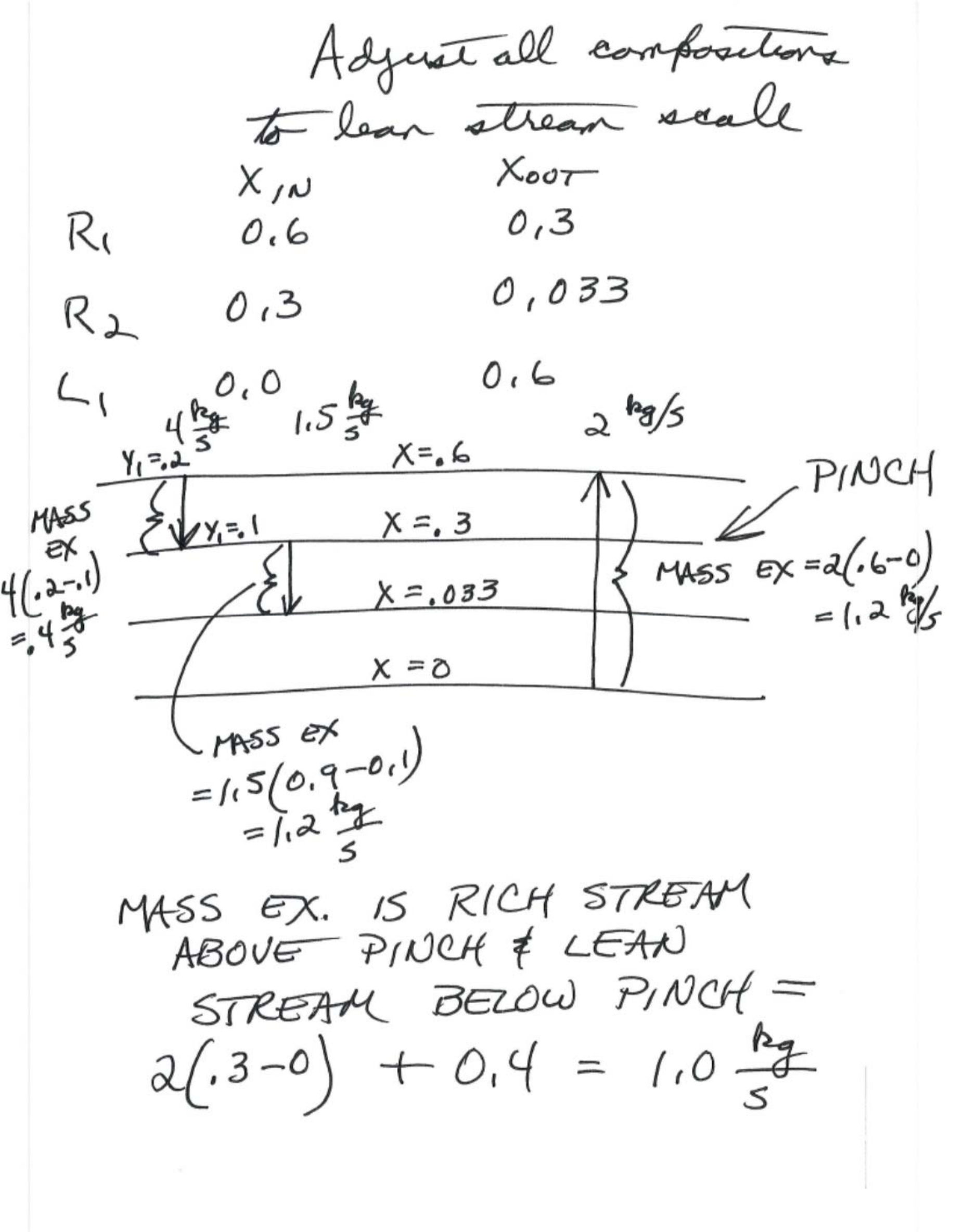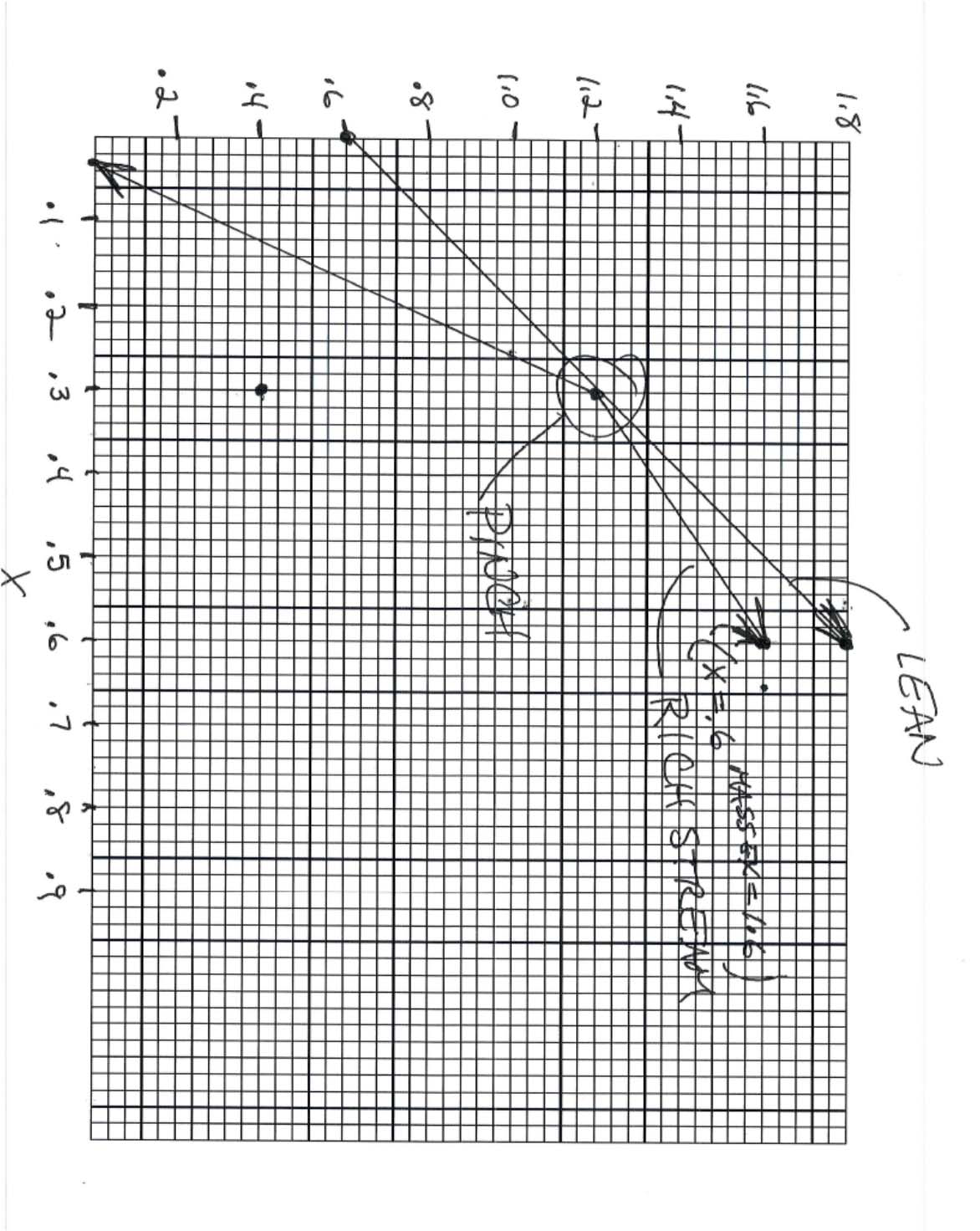The molecular weights methane and carbon dioxide are and
1. (10 points) In class and in your readings, five tiers of costs that are relevant to the evaluation of the environmental benefits of projects were identified. Identify these five tiers of costs, describe the nature of the costs, give an example associated with each tier and describe the level of uncertainty associated with estimating the costs.

51.5 kg CO2 * $50/1000 kg = $2.58
This increases the cost of gas by 65%
Energy Return on Energy Invested
4.(5 points) Cellulose from switchgrass (a perennial plant) and corn stover (the non-grain portion of the corn plant) can be used to manufacture ethanol, which can be used as a transportation fuel. Fossil fuels are used in the production of these renewable fuels, and the energy yield of renewable fuels per unit energy of fossil fuel used in the generation of the fuel is referred to as the Energy Return on Energy Invested (EROEI). Calculate the EROEI for ethanol from corn stover and switchgrass, using data provided by Baral, et al. (2012).a.The yield of corn stover and switchgrass are 7.7 and 16 metric tons per hectare per year, respectively. How much land (in hectares) would be required to make twenty billion gasoline equivalent gallons (GGE) of cellulosic ethanol if the yield of ethanol is 340 and 327 L/metric ton for corn stover and switchgrass, respectively? (1.44 gallons ethanol = 1 GGE). Twenty billion GGE is approximately 15% of U.S. gasoline annual gasoline consumption. Compare your result to the size of the State of Texas (70 million hectare).
ethanol (corn stover):
20 ∗ 10� ��� ∗ 1 metric ton corn stover 340 L ethanol ∗ 3.79 L
1 gal∗ 1.44 ��� �������
Calculate the metric tons of a feedstock that is required to make 20 billion GGE of ethanol (switchgrass):
20 ∗ 10� ��� ∗ 1 metric ton switchgrass 327 L ethanol
So to manufacture sufficient ethanol to replace about 15% of U.S. gasoline use (roughly the fraction of gasoline used in Texas), 30-60% of the land area in the State of Texas would need to be dedicated to fuel crops.
b.(Corn stover example)
First, sum the total fossil fuel energy expended for every million GEG of cellulosic ethanol from corn stover produced:
| 1 ������� ��� ∗ 121,331 ����� � 1.213 ∗ 10^11 kJ |
|---|
�.���∗������
(�.���∗�������*100% = 119.2%(Switchgrass example)
Rate of return = (energy received/ energy input -1) x100%:
�.���∗������
(�.��∗�������*100% = 258%b.How many gallons of water would the US consume for transportation in a year if all light duty vehicles in the US were powered by electricity? The average electrical vehicle uses 0.34 kWh/mile, and the overall charging efficiency (electricity used by vehicle/electricity generated at the power plant) is 68% and the average water consumption for the US electric mix is 0.465 gal/kWh generated at the power plant.
c.How many gallons of water would the US consume for transportation in a year if all light duty vehicles were instead fueled by soy-derived biofuels. The production of these fuels consumes 8 gallons of water per mile.
|
|---|
b.
Problems
(Open book)
1.(30 points) Design a mass exchange network for the following rich and
lean streams:
| R1 |
|
||
|---|---|---|---|
|
|||
| R2 |
|
||
| L1 |
|
a.)Draw a composition interval diagram, using LEAN STREAM concentrations as a common scale


| H2 + 0.5 O2 |
|
|---|
So the fuel cell can provide 34% of the required electricity
b.Assume that the electricity demand of the compressors listed above that is not met by the fuel cell is 5000 kW. Assume that this 5000 KW is provided by a combined heat and power system. Assume that for every 100 kWhr of fuel consumed, 40 kWh of electricity is produced and 40 kWhr of process heat is available at a temperature of 450 K. Assume that this process heat is available from condensing steam, so that all of the enthalpy is available at the constant temperature of 450K. Calculate the amount of enthalpy that is available from the combined heat and power operation.
E-407A Column 404A reboiler 50 MMBTU/hr
E-405A Column 404A feed cooler 50 MMBTU/hr
E-403A Column 403 condenser
15 MMBTU/hr E-410 Sulfuric acid cooler 20 MMBTU/hr
Specify the hot and cold stream inlet and outlet temperatures and capacity flowrates (including the enthalpy from the combined heat and power operations, a total of five streams). Specify which are hot streams and which are cold streams and the total enthalpy needed and available. Use the attached flowsheet to extract data and state assumptions as needed.Solution:
H4 (168+273) 441K (138+273) 411K
C1 473K 473K
b.)Determine the pinch point
c.)Assuming a minimum temperature driving force of 10oC, determine the amount of excess heating, excess cooling and process heat exchanged.

